Dos and Don’ts For Guided Fishing
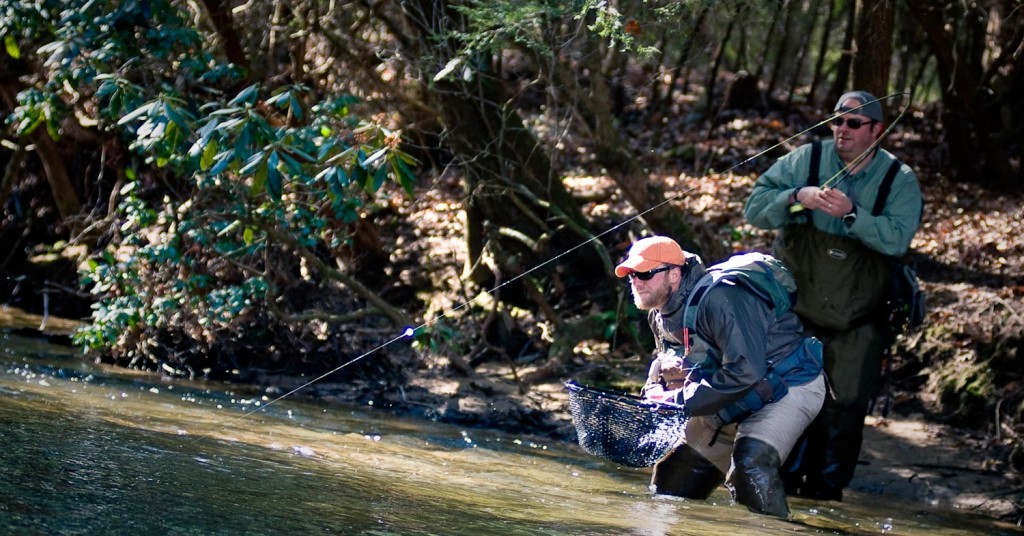
“I have done enough guiding with enough people of all types that I sometimes cheer for the fish.”
My friend Kirk Deeter, writing on the Trout Unlimited blog April 25th, threw out the bold headline: “Guides: Gatekeepers or Profiteers”. There’s no mystery where Kirk stands on the subject. He goes on to write, “I think the sun rises and sets on the fly fishing world where guides collectively say it does. They are stewards of their rivers. They are the innovators, and the teachers. And a good guide is, for fly fishing and trout conservation, worth his or her weight in gold.”
I agree with Kirk completely but it’s apparently a controversial topic. Not everyone loves fishing guides and it got me wondering why. Most of my friends are, or have been, fishing guides. I am not, but I hear the stories and I remember having a few rough days with guides back in the day. I mentioned it to Kirk and this was his response.
“You ask a great question here. Let me put it to you this way. I have done enough guiding with enough people of all types that I sometimes cheer for the fish. Seriously. You can say I said that. On the other hand, nothing lights me up more than sharing a passion with someone who gets it, appreciates it, and really shows some genuine class and enthusiasm. A great guide and client team should be like a Bwana and his tracker… two people on one mission… bound by respect.”
I reached out to a few more friends in the guiding business and asked them, from their perspective, where things go wrong. I decided to make a list. I figured, like Rodney King said, “why can’t we all just get along?”
People hire guides for a host of different reasons but they all want the same thing, a great day on the water. Unfortunately, some days end with neither the guide or the client feeling all that good about it. Malfunctions in the client-guide relationship can spoil what should be a positive experience for everyone. Fortunately these malfunctions can be easily avoided. With that in mind, here is a list of dos and don’ts for your day of guided fishing. Follow these simple guidelines and, even if the fishing is slow, you’ll walk away feeling like you got your money’s worth.
A quick note: I use a great deal of male pronouns. In no way do I mean any disrespect the the many talented and hard working female guides out there. I’m just trying to keep this under 2000 words.
DOS
•Do be enthusiastic
Bring a positive attitude. Have fun, relax. No one fishes well when they’re tense.
•Do be clear about your expectations
Tell your guide right up front what you want out of your day. If you just want to chill and take photos, say so. Want to be a better caster at the end of the day, no problem. Want to catch
Read More »The Reach Cast: Video
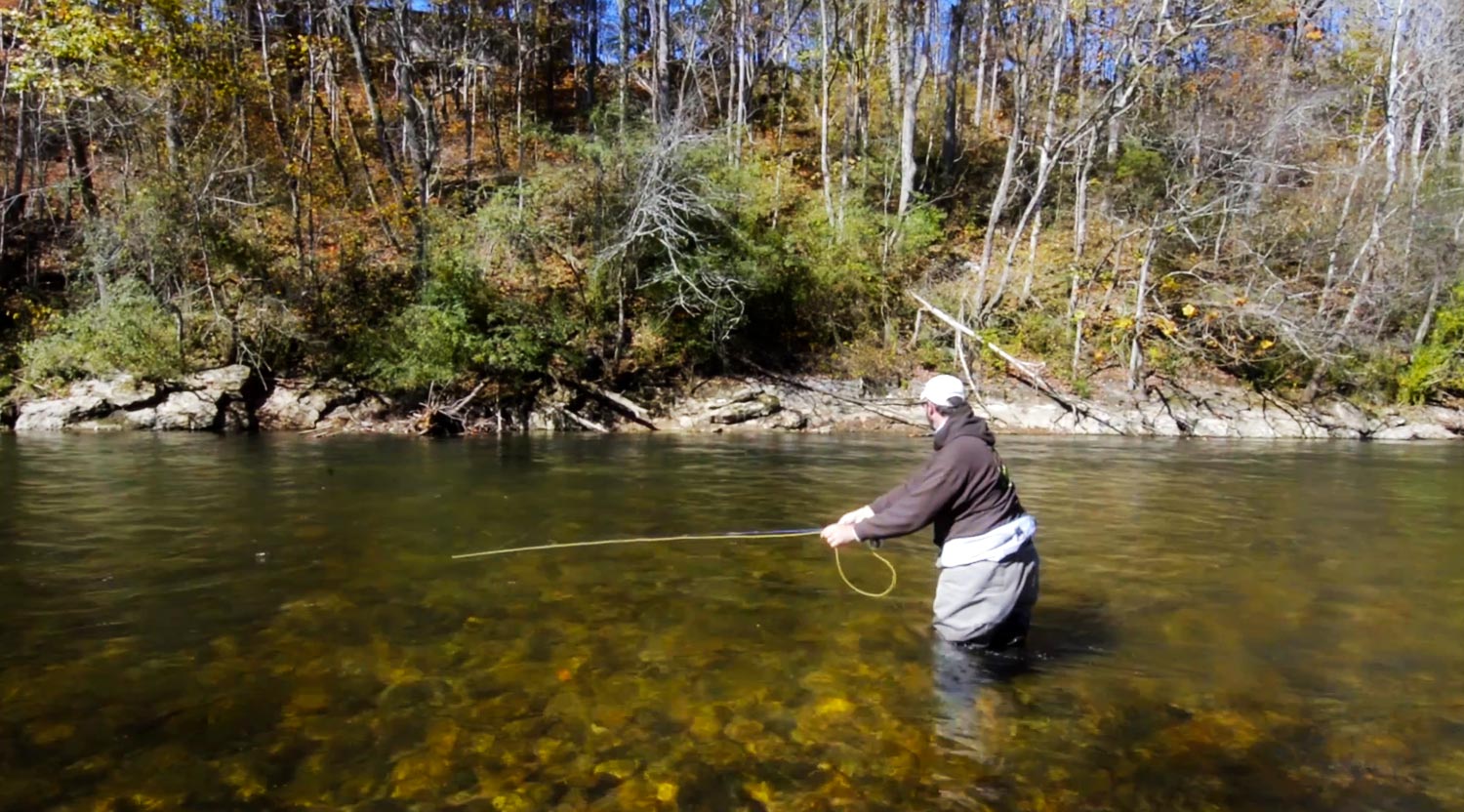
The reach cast can be the difference between catching fish and not.
All too often you find yourself casting across fast water to a rising trout on the far bank. It’s a classic set up and one that can make you crazy. You land your fly in the exact spot, only to have it dragged away as the faster current midstream pulls a belly in your line.
Your best shot at hooking a fish in this scenario is to make a reach cast. The reach cast builds a mend into your line before it touches the water. It can buy you a perfect drift long enough to fool a sipping trout.
Make your normal cast and after you stop your rod tip to form the loop, move the rod tip upstream as the loop unrolls. The movement is perpendicular to the angle of the cast so the tension stays in the line and keeps it energized and on course. Once you know how to make this cast, you’ll wonder how you ever fished without it.
WATCH THIS VIDEO TO SEE HOW IT’S DONE!
Read More »Streamer Fishing For Trophy Browns: Is Your Streamer Big Enough?
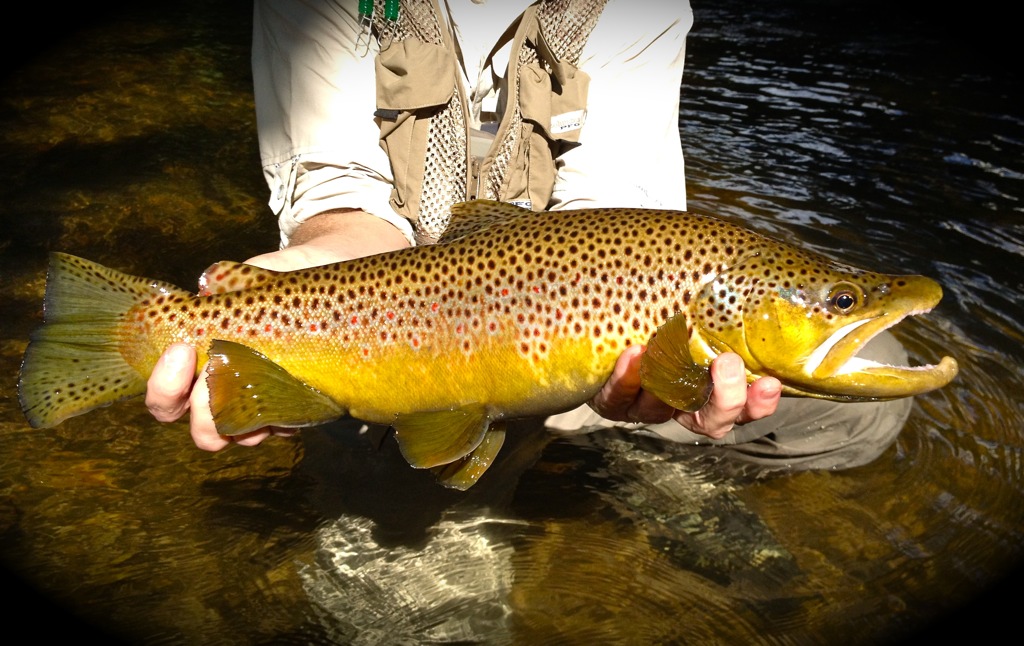
The other day I was talking with a friend about streamer fishing for trophy class trout. Specifically we were debating what’s the best size streamer for catching trophy browns. My buddy confidently proclaimed the biggest of trout will eat a three inch streamer just as fast as they’ll eat a five or six inch fly. There’s no doubt that plenty of gargantuan trout have been caught on smaller streamers by fly anglers all over the world, so I didn’t argue with my buddy even though I didn’t agree 100% with him. That being said, I do think location and food source availability does have a lot to do with what size fly pattern you should be fishing if you’re after the biggest browns in your home waters when it comes to streamers.
Where I live and guide in North Georgia, big wild brown trout are few and far between. Of the thousands of miles of designated trout water in my area, only a handful of streams and rivers support the caliber of wild brown trout that truly turn heads. The large majority of big browns that are caught each year, usually don’t end up being wild brown trout, but instead hold overs that have been previously stocked by our DNR. Lucking up and landing a twenty plus inch wild brown trout here, is a rare feat that’s not easily accomplished, regardless of how high the skill level happens to be by the angler wetting a line. Our streams arent’ that fertile so biggest of trout are more times than not, forced to eat juvenile trout to maintain their size.
I’ve always told my clients that brown trout seem to carry an overwhelming wiseness to them, when you compare them to other species of trout. They seem to always hangout in places where it’s extremely difficult to present a fly, and they’re the first fish to go running for cover when they sense the slightest bit of danger around them. The other day guiding and enjoying my time on the water mentoring one of my favorite clients (Gary Rogers), we came as close as we could possibly get to landing a giant wild brown trout. We had chosen the right location, a small wild trout stream that’s known for holding good numbers of wild brown trout. A year prior, almost to the very day, Gary had landed a huge 26″ brown. We’ve never stopped talking about that rare catch, and both of us yearned to witness a catch like that again together. As we waded up to S-bend in the stream that held a perfect undercut bank, we focused as a team the best we could on the task at hand. Both of us knew without speaking out loud, that if there was going to be a big brown anywhere in this stream, it was going to be found right here in that bend. Gary waded into position and presented his nymph rig off the back of the shoal leading towards the S-bend, and a few seconds later, he set the hook on a trout. It was approximately a 12-inch wild rainbow, and as the rainbow tried vigorously to shake the hook loose at the end of Gary’s line, I saw a big brown jolt out from the undercut bank and take a swipe at his rainbow. It was easily 24 inches or better, and as quickly as that trophy brown showed itself, it disappeared out of sight.
Read More »Zack Thurman’s Swimming Leech
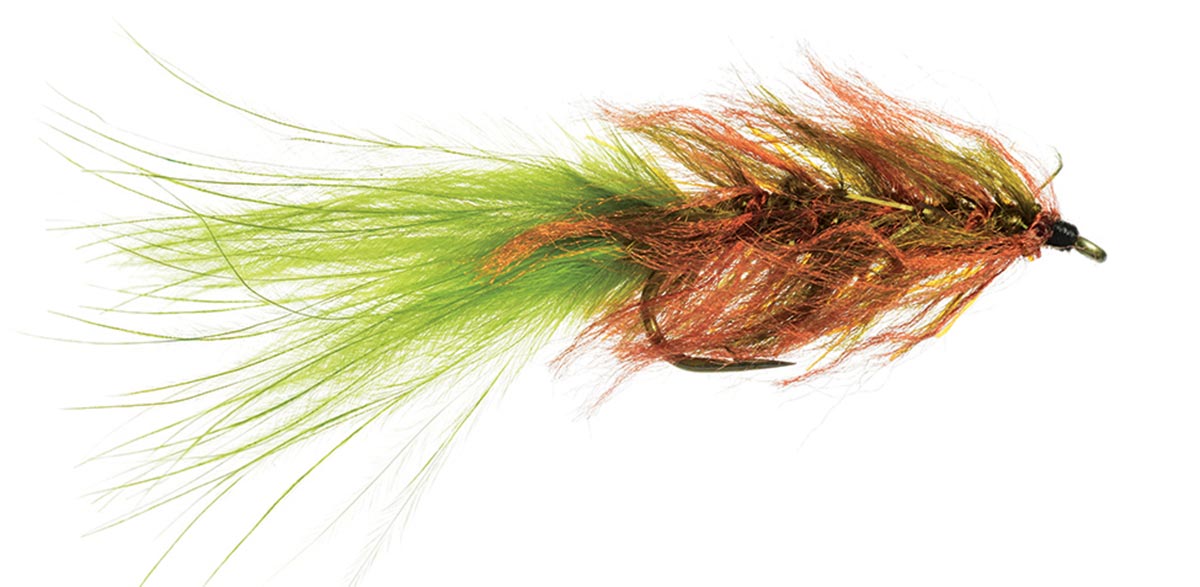
By Bob Reece
The simplicity of most leech patterns can lead to the misconception that the accuracy of their imitation is not important. As with many patterns, their above water appearance is often the sole determining factor for whether they are used or passed over. Yet, with any subsurface pattern its underwater behavior and appearance should be considered.
Zack Thurman has an in-depth understanding of still water fly fishing. This is evident in the numerous and highly effective patterns that he has created for these types of water. His swimming leech falls into this group of productive flies and has found its way to my fly box.
Last year I started a guide business north west of Cheyenne, Wyoming. All of the guided fishing that takes place at Horse Creek Ranch occurs on thirteen still waters that are spread out over this 60,000 acre expanse of land. When choosing the flies that I would use, I tested over a dozen main stream leech patterns. Zack’s swimming leech out produced all of the other patterns by at least a five to one ratio. I have since used it on numerous public waters and it has displayed an equally impressive rate of production.
The key ingredient to this success is the
Read More »6 Tips For Catching Spooky Bonefish

BONEFISH CAN GET SPOOKY. CRAZY, UNREAL, MADDENINGLY SPOOKY.
I found myself dealing with just this situation the other day. Wading for super spooky bonefish in skinny water. Not the easiest day of fishing to be sure, but I did pretty well. I thought I’d share some of the tactics that I use to bring spooky bonefish to hand. Some are obvious and some, not so much.
Wade quiet, or not at all
Bonefish are very sensitive to sound. Especially the sound of your legs pushing water. On days when the wind is still and the water calm, you can barely move without alerting them. Take special care that your steps do not push water. Go super slow! Be aware of pot holes and soft mud that may throw you off balance and cause sudden movements. Find ambush spots like inlets and points and just hang out for a while. Let the fish come to you.
Use light flies
Bonefish are extra spooky in skinny water. You don’t need a heavy fly when the water is shallow so switch to a lighter fly that will land softer on the water. Use bead chain eyes instead of lead eyes, and for extra quiet presentations wrap some hackle at the eyes to cushion their landing.
Keep a low profile
When bonefish are close, crouch or kneel to minimize your visibility. Wear soft natural colors that blend with the surroundings. This is crucial when fish are following your fly and swimming straight for you.
Lead ’em farther
If fish are blowing up on good presentations, or even before the fly hits the water, it’s time to lengthen your lead. The other day I
Making The Connection- Saltwater
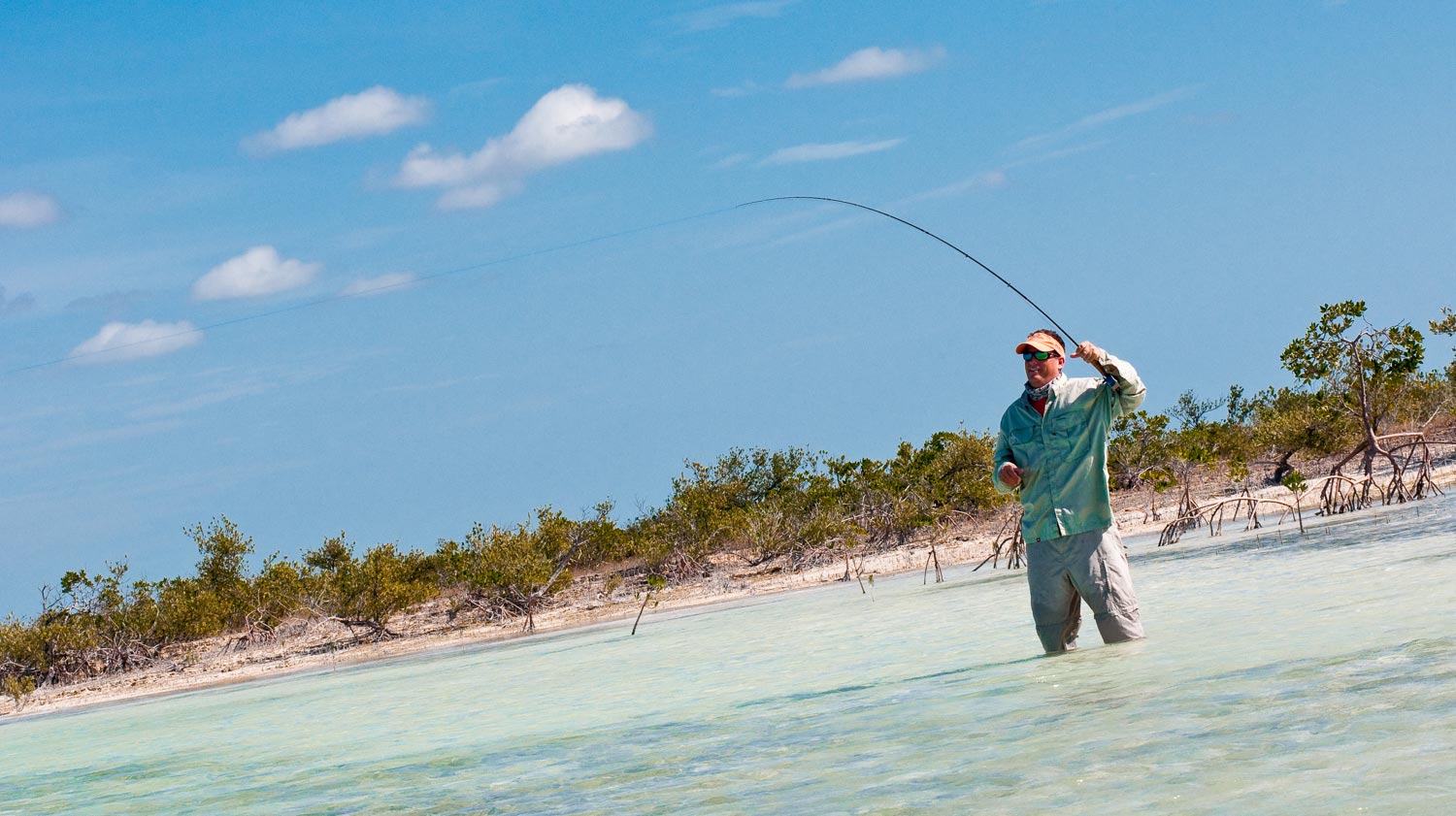
By Louis Cahill
How do you connect your leader to fly line when the pressure is really on?
This is sure to be a lively topic. I wasn’t aware this was such a hot button topic until I published an article by Devin Olsen titled, “Making The Connection,” and watched the comment section light up. Unfortunately a couple of readers missed the point completely. All too often, anglers are more interested in talking about how they do things than they are in learning something new.
Well, talking about how I do things is my job so here we go, I guess. I got to thinking about this after I made the mistake of responding to a post on Facebook. I know, what was I thinking? An angler was puzzling about the coating of his fly line separating from the core. He was using a nail knot to connect his leader to the fly line for bonefishing, and I made the comment that a nail knot was not a good choice for saltwater.
He responded, “I’ve been using a nail Knot for 20 years and never had a problem before now!”
Well, now he’s having a problem. Sure you can get away with lots of choices that aren’t the best choices, but when do you think the problem is going to happen? When you hook a half-pound schoolie or when you stick a 10-pound bruiser? I don’t know about you, but I want everything working in my favor, every cast.
Your fly line is a composite of two materials. A coating formed over some kind of core. The material of each varies depending on the line and the manufacturer. Think of your fly line as an electrical wire with a copper core and plastic insulation. A nail knot pinches the coating to the core. When you apply pressure to the leader, you’ve made a wire stripper. Pressure from the fish stretches the coating and not the core. You’re asking for a failure.
A nail knot is fine for species like trout.
Your tippet will generally fail long before your nail knot. Regardless, I believe in always making the best choice when it come to rigging. For my money, there are two good options for attaching line to leader in saltwater, where your connection is really going to get tested.
One good choice is
Read More »The Fish Of A Lifetime: Video
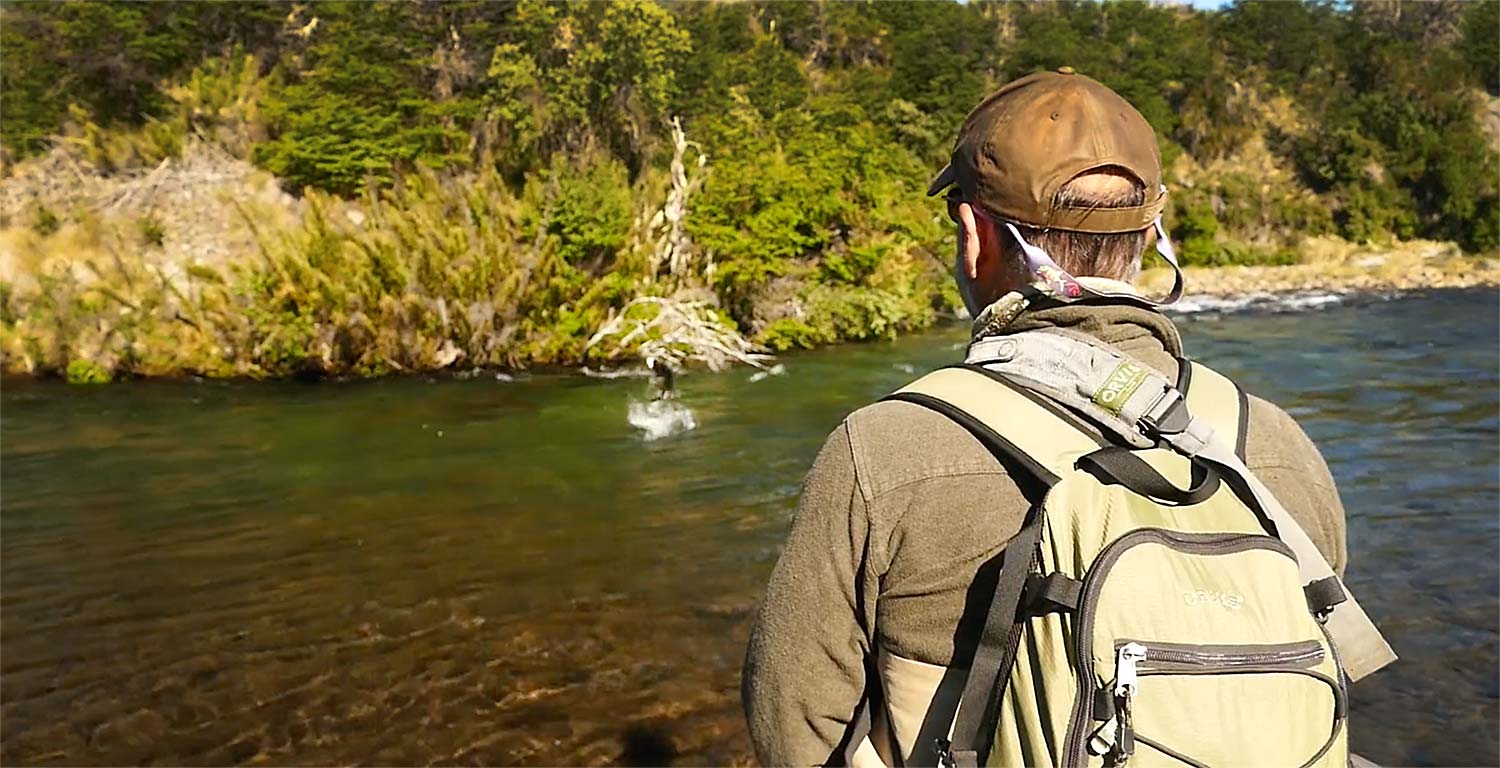
What happens when the fish of a lifetime refuses your fly three times?
If you are Jack Stephens, and you’ve spent half a century looking for a river no one has fished, and you’ve found it…you cast again. This is an amazing fishing story, and all caught on film. The kind of magic that only happens in Patagonia.
Read More »A Closer Look, Barracuda
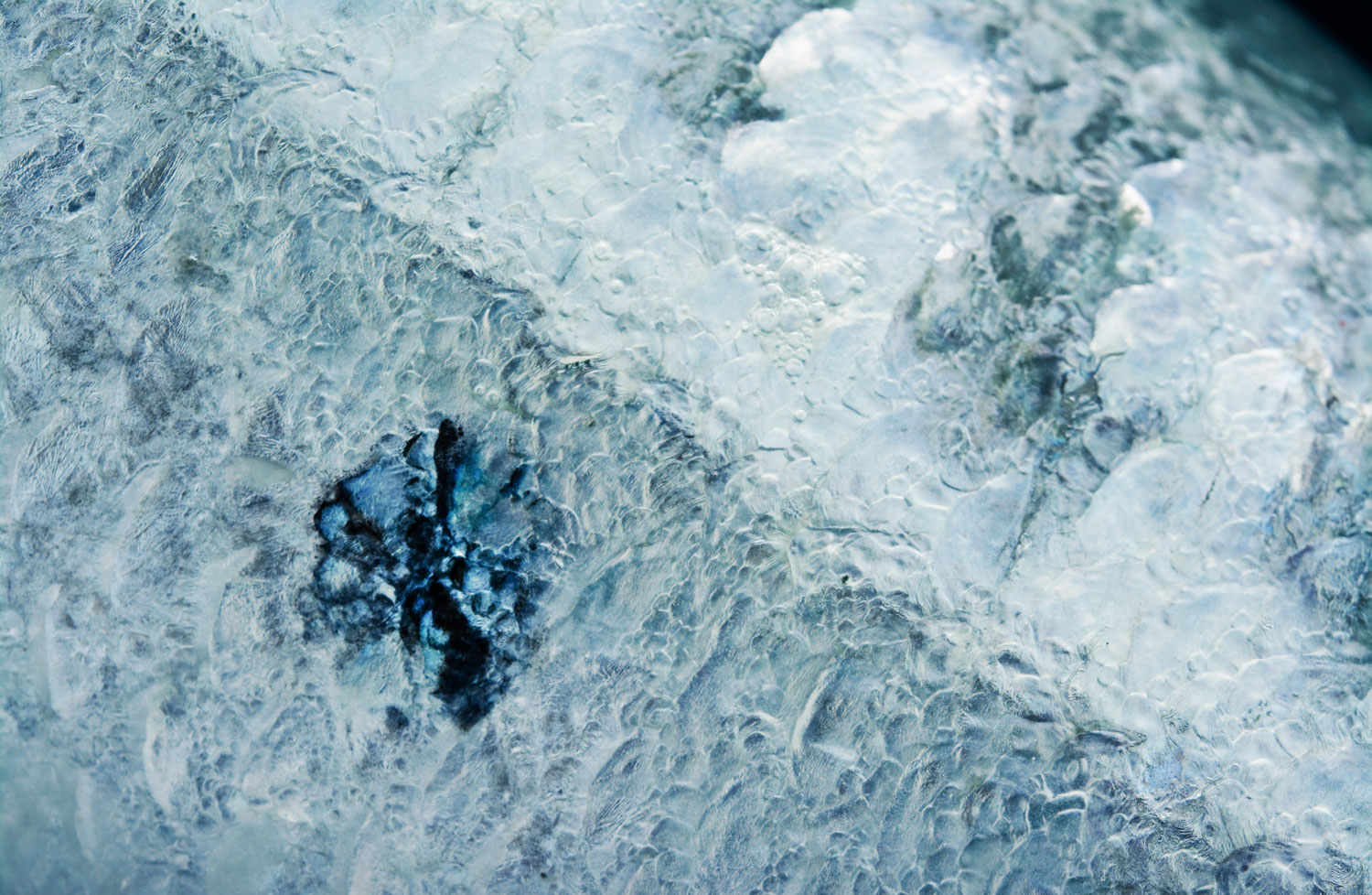
BARRACUDA GET A LOT OF ATTENTION FOR BEING SCARY.
Sharp teeth, warp speed, bad attitude. They deserve their reputation. They are an awesome and underrated sport fish. I love the adrenaline rush of catching them on the fly.
What they get very little attention for is what a beautiful fish they are. Their iridescent colors and primal markings make them worth a closer look.
Read More »Please Stay Off Your Phone!
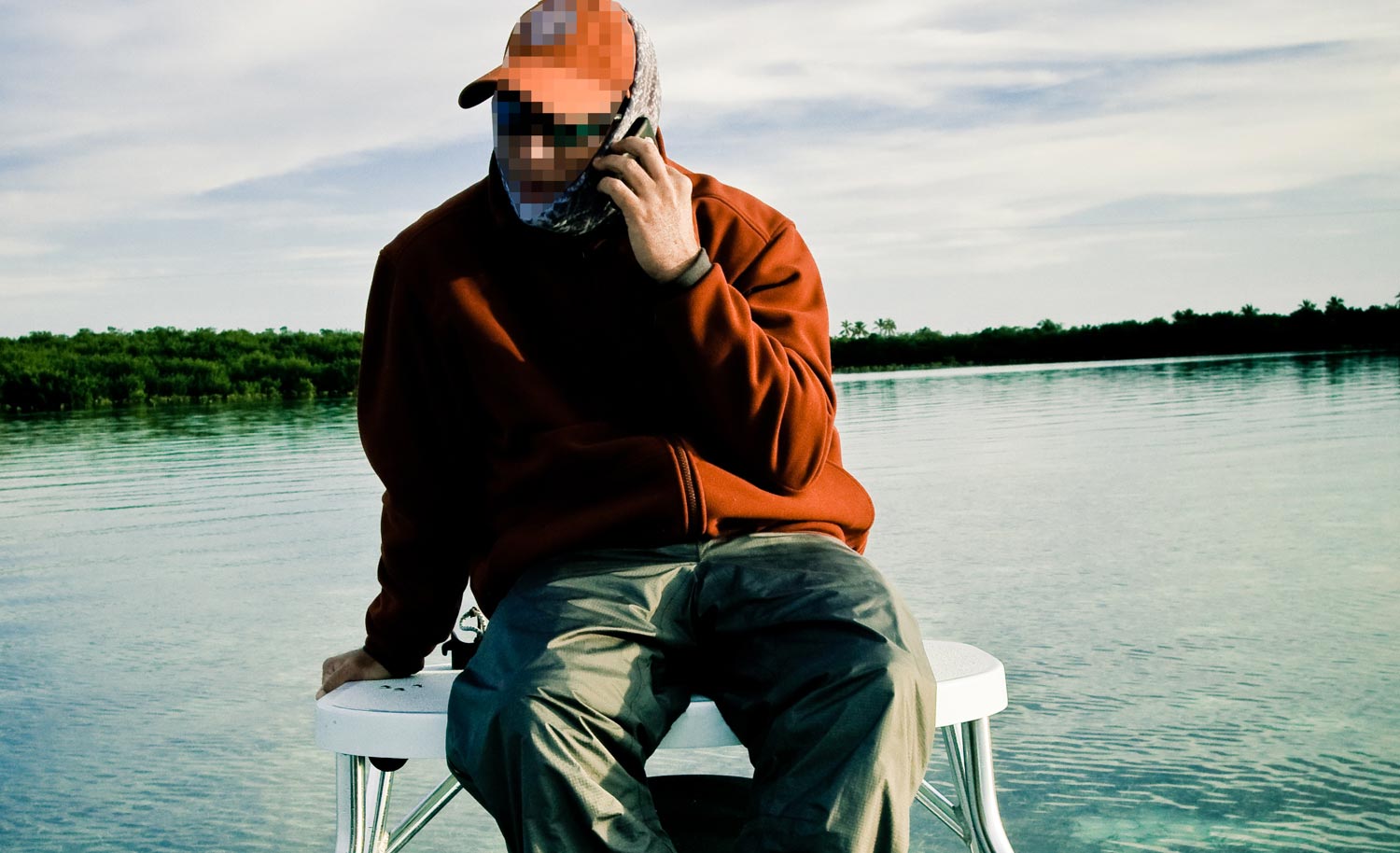
GUIDES, WHETHER FRESHWATER OR SALTWATER, DO YOURSELF A FAVOR AND DO THIS ONE THING WHEN YOU ARE WITH YOUR CLIENTS…
STAY OFF YOUR PHONE!
We have all become used to this “phones-that-do-all” culture. Cell phone technology has made things so convenient, that we forget what it’s like to function without one. I’m not bashing it. In fact, I’ve always got my phone on me. I use it to complete a load of daily tasks. Even when I’m on the water, it’s in my front wader pocket so I can get to it to take the occasional photo. However, when I’m on the water with clients, it stays on vibrate and I don’t take it out.
Nothing will make your client feel less important than looking over to his/her guide to find them engrossed in Facebook or talking with a buddy about their weekend plans. Anglers hire guides to guide them while on the water, not play on their phones and serve as a net man from time to time. Much of this will sound like some pretty common sense stuff to the majority of the folks that will read this, however, there are guides out there that do this exact thing. I’ve heard some pretty impressive displays of guides not giving a damn and it gets my blood boiling. Hiring a guide isn’t cheap. And when folks do hire a guide, they should expect the best from their guide, and to learn from their guide. No client should walk away from a guided trip without having learned something new, regardless of the fishing.
If the call or text conversation has some relevance to the trip that day, then be sure let your client know. Short of an emergency, any other phone calls or texts can wait until either the lunch break, or the end of the day. The only other reason
Read More »The Pregnant Scud: Tying Video
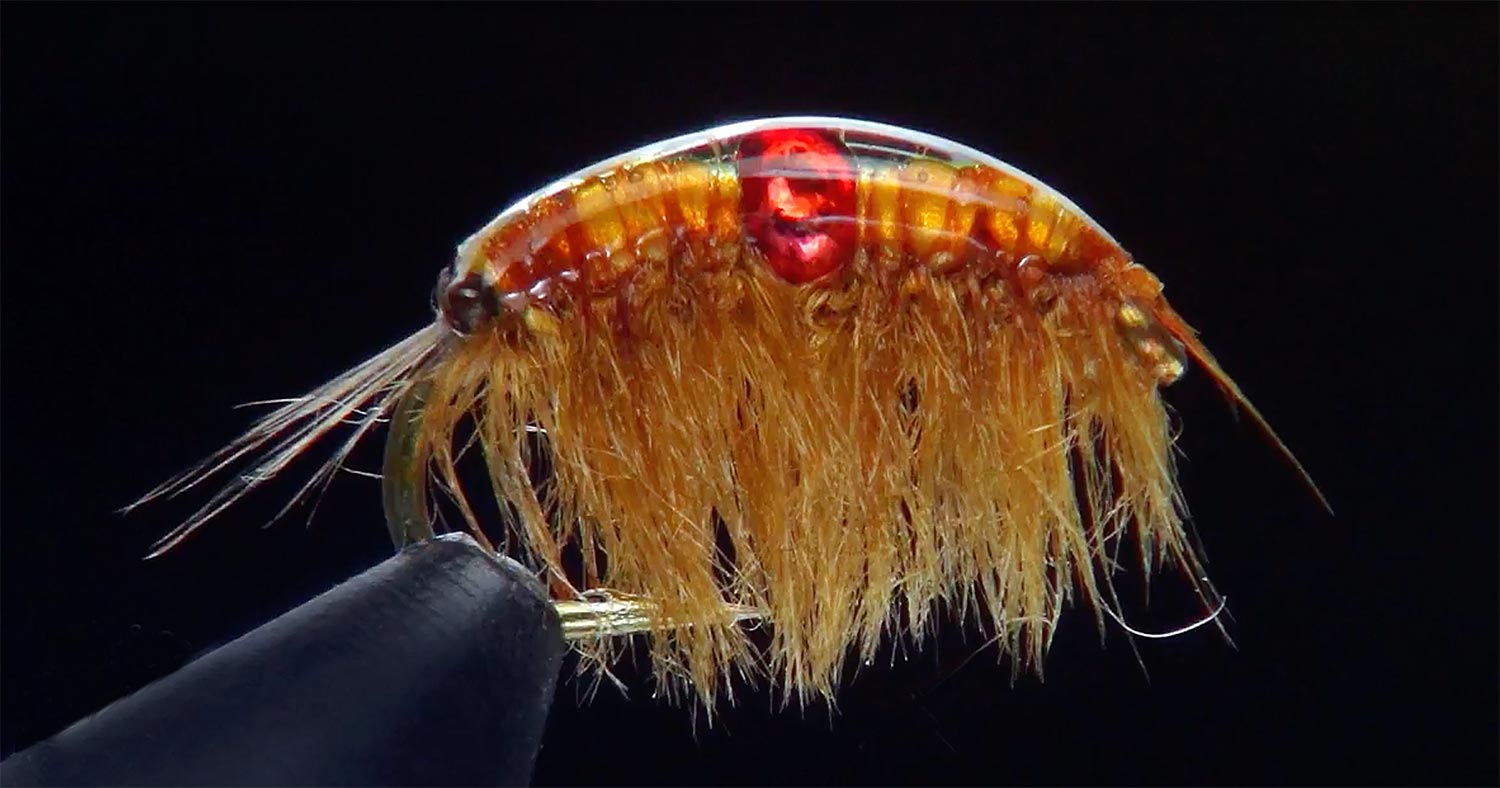
By Herman deGala
In the early 80’s I had a design professor by the name of Herb Kobayashi from Hawaii who tried to instill in us the concept of shibui.
Shibui has no direct translation into English but describes the aesthetic of simplistic, elegant beauty not only in design, art, processes and of course swordplay.
As I look at some of my favorite fishing flies they embody some of those same principles, Barr’s Copper John, Rim’s RS2, Mercer’s Twisted Nymph and of course Craven’s Jujubaetis. There are many more examples out there. They typically use very few materials and they mimic the behavior and profile of the natural. They are usually not very gaudy, but a good attractor has it’s place.
For my first post for Gink and Gasoline I share with you my favorite scud pattern. I kept in mind those concepts from Professor Kobayashi not only when I designed this fly, but also when I fish, produce videos, photograph and share good times on the water with friends and family.
WATCH THIS VIDEO AND LEARN TO TIE THE PREGNANT SCUD
Read More »